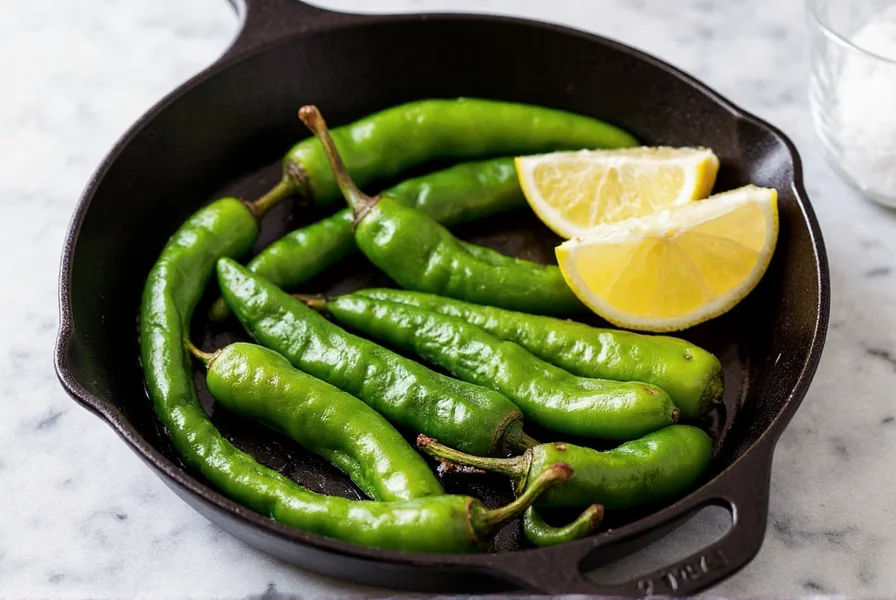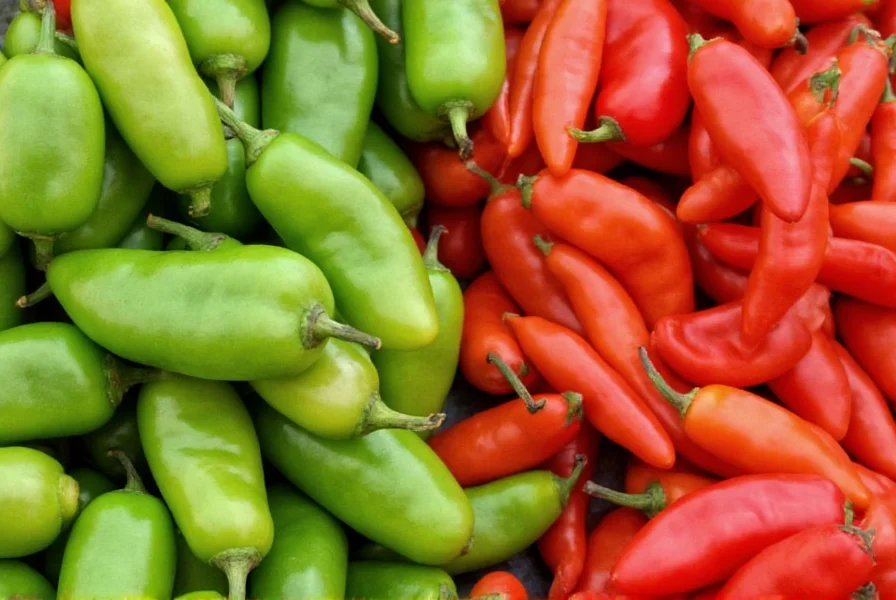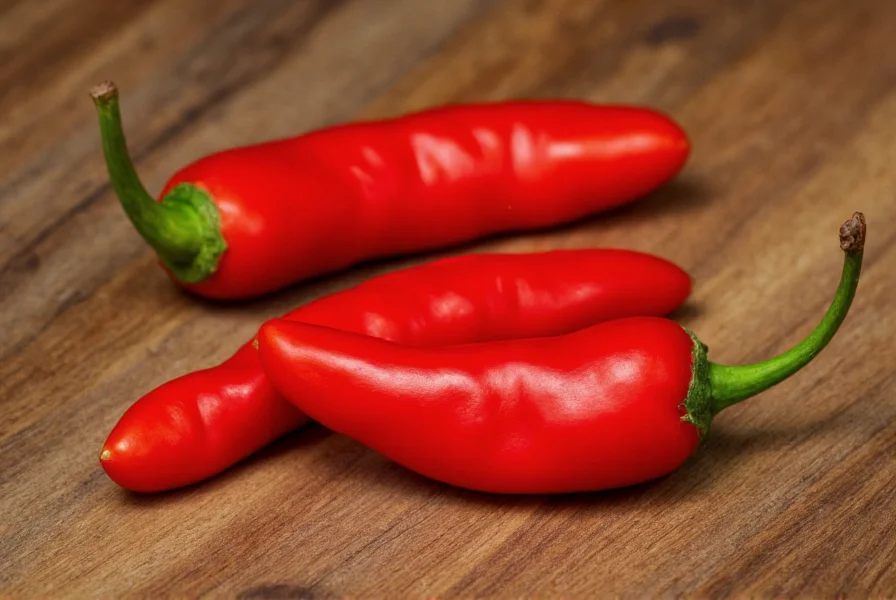Shoshito peppers have become a staple in modern culinary scenes, appearing on menus from high-end restaurants to casual tapas bars. These slender, bright green peppers measure approximately 4-6 inches long and 1 inch in diameter, with distinctive thin, crinkled skin that gives them their characteristic appearance. Unlike many hot peppers, shoshitos offer a predominantly mild, grassy-sweet flavor profile that makes them accessible to most palates, while still providing that occasional spicy surprise that keeps diners engaged.
Understanding the unique characteristics of shoshito peppers begins with recognizing their botanical classification. Botanically known as Capsicum annuum, they belong to the same species as bell peppers, jalapeños, and cayenne peppers, but represent a distinct cultivar developed specifically for their mild heat profile. Native to Japan but believed to have Spanish origins (similar to padrón peppers), shoshitos have gained international popularity over the past two decades, particularly in the United States where they're commonly featured as a bar snack or appetizer.
Flavor Profile and Heat Characteristics
The defining feature of shoshito peppers is their remarkably mild heat level, typically registering between 50-2,000 Scoville Heat Units (SHU)—significantly milder than jalapeños (2,500-8,000 SHU) or serranos (10,000-23,000 SHU). However, the 'one in ten rule' creates an element of culinary excitement: approximately one in every ten shoshito peppers contains enough capsaicin to deliver a noticeably spicy experience. This variation occurs naturally due to environmental factors during growth rather than genetic differences.
| Pepper Variety | Typical Scoville Range | Flavor Profile | Common Preparation |
|---|---|---|---|
| Shoshito | 50-2,000 | Mild, sweet, grassy with citrus notes | Blistered with sea salt |
| Padrón | 500-2,500 | Earthy, nutty, variable heat | Blistered with coarse salt |
| Jalapeño | 2,500-8,000 | Grassy, bright, moderately hot | Raw, pickled, roasted |
| Serrano | 10,000-23,000 | Sharp, bright, distinctly hot | Raw in salsas, roasted |
Culinary Applications and Preparation Techniques
Chefs and home cooks value shoshito peppers for their versatility in the kitchen. The most popular preparation method involves blistering—quickly cooking the peppers in high-heat oil until their skins char and blister, then finishing with a sprinkle of flaky sea salt and sometimes a squeeze of lemon or drizzle of citrus-infused oil. This simple technique enhances their natural sweetness while creating complex roasted flavors.
When cooking with shoshito peppers, proper technique matters. For optimal blistering results:
- Use a cast-iron skillet or grill over medium-high heat
- Add minimal oil—just enough to coat the bottom of the pan
- Cook for 5-7 minutes, turning occasionally until evenly blistered
- Season immediately after cooking while still hot
Beyond simple blistering, shoshito peppers excel in various culinary applications. They can be incorporated into stir-fries, added to omelets, stuffed with cheese, pickled for longer preservation, or even roasted and blended into sauces. Their thin walls and minimal seeds make them ideal for eating whole without extensive preparation—a significant advantage over thicker-walled peppers that require more processing.

Distinguishing Shoshito from Similar Varieties
Many people confuse shoshito peppers with padrón peppers, and for good reason—they share similar appearance and culinary uses. However, several key differences exist between these two popular mild pepper varieties. Shoshito peppers typically have thinner, more delicate skins with more pronounced wrinkles, while padrón peppers tend to be slightly thicker-walled with smoother skin. Flavor-wise, shoshitos offer more citrus notes, whereas padróns have earthier, nuttier characteristics.
The heat distribution also differs subtly between these varieties. While both follow the 'one in ten' heat rule, shoshito peppers generally maintain more consistent mildness, with their occasional hot specimens rarely exceeding medium heat levels. Padrón peppers, by contrast, can occasionally produce specimens with significantly more heat—sometimes approaching mild jalapeño levels.
Nutritional Benefits and Selection Tips
From a nutritional standpoint, shoshito peppers offer valuable benefits beyond their culinary appeal. Like all chili peppers, they contain capsaicin (in modest amounts), which has been associated with various health benefits including improved metabolism and pain relief. They're also excellent sources of vitamin C (providing approximately 120% of the daily recommended value per 100g), vitamin A, and various antioxidants.
When selecting shoshito peppers at the market, look for specimens that are firm, vibrant green, and free from wrinkles or soft spots. While some natural wrinkling is normal, excessive softness indicates overripeness. The best shoshitos feel heavy for their size with smooth, taut skin. Store them in the refrigerator's vegetable drawer in a paper bag for up to one week for optimal freshness.

Growing Shoshito Peppers
For gardening enthusiasts, shoshito peppers can be successfully grown in home gardens with proper conditions. They thrive in warm climates with full sun exposure and well-draining soil. When cultivating shoshito peppers, maintain consistent moisture without waterlogging, as fluctuating water levels can increase the likelihood of hotter peppers. The plants typically reach 2-3 feet in height and produce abundant yields when properly cared for.
Harvest shoshito peppers when they're bright green and approximately 4-6 inches long for the characteristic mild flavor. If left on the plant to fully ripen, they turn a deep red color and develop slightly sweeter, more complex flavors with marginally increased heat. Red-ripe shoshitos work beautifully in sauces, salsas, or when dried for flakes.
Conclusion
Shoshito peppers represent an ideal entry point for those exploring mildly spicy foods while offering enough complexity to satisfy experienced chili enthusiasts. Their unique combination of consistent mildness with occasional spicy surprises, coupled with versatile culinary applications, explains their rapid rise in popularity. Whether enjoyed blistered as a simple appetizer or incorporated into more complex dishes, shoshito peppers deliver distinctive flavor experiences that continue to captivate chefs and diners worldwide.
How hot are shoshito peppers compared to other common peppers?
Shoshito peppers typically measure between 50-2,000 Scoville Heat Units (SHU), making them significantly milder than jalapeños (2,500-8,000 SHU) or serranos (10,000-23,000 SHU). Approximately 90% of shoshito peppers deliver only mild, sweet heat, while about 10% contain enough capsaicin to provide a noticeably spicy experience—though rarely approaching the heat levels of dedicated hot peppers.
What's the difference between shoshito and padrón peppers?
While similar in appearance and culinary use, shoshito peppers have thinner, more wrinkled skins with citrus-forward flavor notes, while padrón peppers feature slightly thicker walls with earthier, nuttier characteristics. Shoshitos generally maintain more consistent mildness, whereas padróns can occasionally produce specimens with significantly more heat. Both follow the 'one in ten' heat rule, but padróns have greater heat variability.
How should I prepare shoshito peppers for the best flavor?
The optimal preparation involves blistering shoshito peppers in a hot cast-iron skillet with minimal oil until their skins char and blister (5-7 minutes), turning occasionally. Immediately after cooking, season with flaky sea salt and optionally finish with lemon juice or citrus oil. This technique enhances their natural sweetness while creating complex roasted flavors without requiring extensive preparation due to their thin walls and minimal seeds.
Can I grow shoshito peppers in my home garden?
Yes, shoshito peppers can be successfully grown in home gardens. They thrive in warm climates with full sun exposure and well-draining soil. Maintain consistent moisture without waterlogging, as fluctuating water levels can increase heat variability. Plants typically reach 2-3 feet in height and produce abundant yields. Harvest when peppers are bright green and 4-6 inches long for characteristic mild flavor, or allow them to ripen to red for slightly sweeter, more complex flavors.
How do I select and store fresh shoshito peppers?
Select firm, vibrant green shoshito peppers that feel heavy for their size with smooth, taut skin. Avoid specimens with excessive softness or wrinkles, which indicate overripeness. Store them in the refrigerator's vegetable drawer inside a paper bag (not plastic) for up to one week. Do not wash before storage, as excess moisture accelerates spoilage. For longer preservation, consider pickling or freezing after blanching.











 浙公网安备
33010002000092号
浙公网安备
33010002000092号 浙B2-20120091-4
浙B2-20120091-4